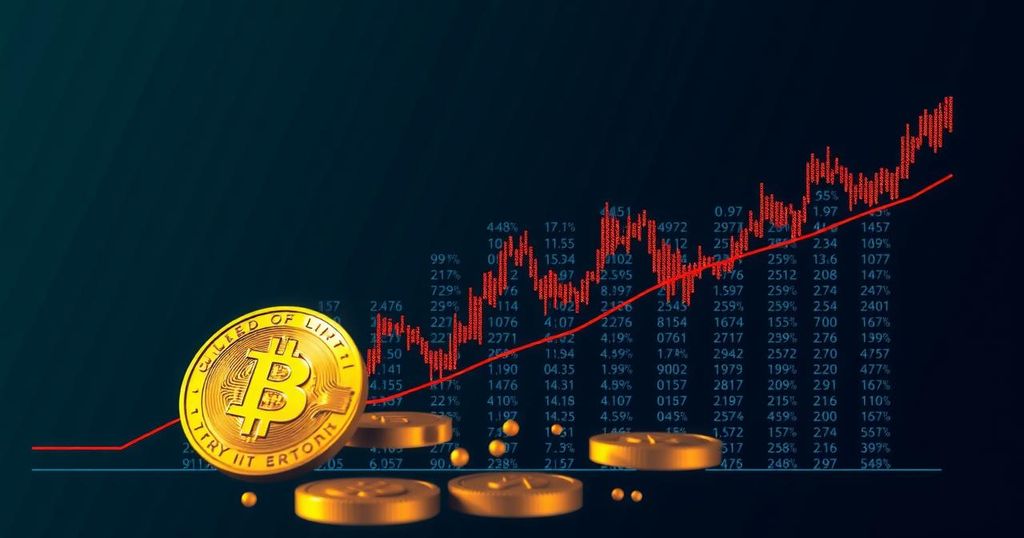Bitcoin’s Future Rally Tied to Inflation and Employment Indicators
Bitcoin, the leading cryptocurrency, is influenced by current employment and inflation data. Recent economic trends suggest potential price surges for Bitcoin, with analysts optimistic about its future performance. The designation of “strong buy” underlines confidence in its market recovery, despite existing volatility and corrections.
Bitcoin remains the preeminent cryptocurrency, largely due to its substantial market capitalization that greatly influences other digital currencies. Despite the emergence of various altcoins with enticing features, Bitcoin’s sustained popularity can be attributed to its ability to maintain value and present more stable price movements over time. In an industry characterized by volatility, Bitcoin’s relatively predictable pricing offers a refuge for anxious investors. However, the unpredictable nature of price fluctuations poses challenges, making it essential for traders to develop protective strategies based on historical performance and factors that could affect future movements.
In light of recent economic indicators, the Bitcoin market is responding to troubling employment data which may signify a decelerating economy. The latest report from the US Bureau of Labor Statistics highlighted over eight million job openings, with a concerning 0.8 unemployed individuals per one job opening—the highest ratio since February 2021. A possible economic slowdown is likely to contribute to declining inflation, both of which have historically proven to be bullish signals for Bitcoin’s value.
Market analysts predict that if the Consumer Price Index (CPI) decreases even slightly, as it did recently by 0.1%, Bitcoin’s valuation could soar once again. This reaction could recreate past scenarios where slight trends in inflation triggered substantial price surges, leading to forecasts of Bitcoin potentially surpassing its all-time high of $73,679 by July. While some analysts express caution regarding these bullish scenarios, it is evident that Bitcoin has overcome a consolidation phase, indicating the potential for positive price developments.
Despite a solid start to the year, Bitcoin now finds itself at a critical juncture following several corrections that have challenged investor sentiment. The simple moving average across different time frames also underscores this uncertainty, suggesting a period of consolidation. As volatility has remained low following the previous rally, the market sentiment remains strong, yet cautious consolidation may indicate short-term retractions. Investors are thus urged to remain vigilant and prepared, ensuring that their portfolios stay resilient amidst potential price volatility.
Currently, Bitcoin is classified within the “strong buy” zone based on technical studies from recent market analyses. This designation indicates that Bitcoin is projected to perform impressively compared to its peers, with a focus on both its exponential and simple moving averages as indicators of upward momentum. Such an endorsement from analysts suggests confidence in Bitcoin’s valuation, positioning it favorably in the market.
While the cryptocurrency market continues striving for recovery, there is a palpable optimism pertaining to Bitcoin’s future performance. Investors are now more focused on consolidating their holdings to optimize their portfolios, anticipating that stability and growth will soon follow, given the economic indicators at play.
Bitcoin, launched in 2009, stands as the foremost cryptocurrency with the largest market capitalization, impacting the price movements and interest of alternative coins. It has maintained its popularity despite the introduction of various other cryptocurrencies that offer advanced features. The nature of Bitcoin’s price stability compared to its volatile counterparts highlights its significance as a digital asset. Understanding the interplay of inflation, employment rates, and Bitcoin’s market performance is crucial for current and prospective investors, particularly in the context of fluctuating economic conditions.
In summary, Bitcoin’s future price movements are increasingly tied to broader economic indicators such as inflation and employment rates. As the cryptocurrency market reacts to these signals, analysts suggest a potential recovery path leading towards new highs for Bitcoin. The current classification of Bitcoin as a “strong buy” reflects the general confidence in its ability to outperform the market. Investors must remain attentive to developments in the economic landscape while strategically managing their portfolios in anticipation of potential opportunities or challenges.
Original Source: www.dmnews.com








Post Comment